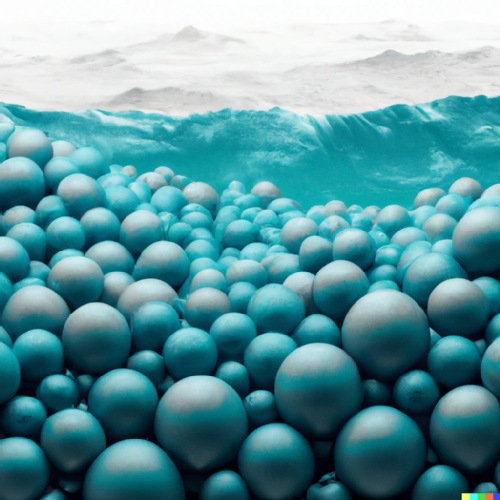Scientists are using the mechanics of giant waves on a nanometric scale

Scientists have shown that the mechanics of rogue waves can be applied to the scale of a nanometer, with potential applications in various industries, including manufacturing and medicine. The study involved direct simulations of molecules and the development of new mathematical models. This theory can help control when and how layers rupture, leading to advancements in nanotechnologies and providing insights into dry eye disorders.
Rogue waves were once considered to be a myth and are known to hit oil rigs and ships in their path. Unlike tsunamis, rogue waves form by the chance combination of smaller waves in the ocean, making them rare events.
Researchers have been studying rogue waves for years, but now they are showing how this phenomenon can be applied on a much smaller scale - nanometrically. This new approach to the behavior of liquids on a nanometric scale has been published as a letter in Physical Review Fluids. A nanometer is a million times smaller than the thickness of a page of a book.
Scientists have found that the holes and bumps caused by rogue waves can be manipulated to produce patterns and structures for use in nano-manufacturing, which is manufacturing on a scale one-billionth of a meter. For instance, patterns formed that rupture liquid films can be used to build microelectronic circuits, which could be used in the production of low-cost components of solar cells. Furthermore, the behavior of thin liquid layers could help to explain why millions of people worldwide suffer from dry eye, which occurs when the tear film covering the eye ruptures.
The University of Warwick’s Mathematics Institute led a study that used direct simulations of molecules and new mathematical models to discover how nanoscopic layers of liquid behave in unexpected ways. Although spilled coffee on a table may seem still, at the nanoscale, the chaotic motion of molecules creates random waves on a liquid’s surface. A rare event occurs when these waves conspire to create a large 'rogue nano wave' that bursts through the layer and creates a hole. The new theory explains how and when this hole is formed, providing new insights into an unpredictable effect. The team of researchers is excited about the potential of this research in various industries. The applications are far-reaching.
Professor James Sprittles from the Mathematics Institute at the University of Warwick said, "We were thrilled to discover that mathematical models initially developed for quantum physics and recently applied to predict rogue ocean waves are essential for predicting the stability of nanoscopic layers of liquid. We hope that in the future, the theory can be used to develop a range of nano-technologies where controlling when and how layers rupture is critical. It could also have implications in related areas, such as the behavior of emulsions in foods or paints, where the stability of thin liquid films determines their shelf-life."

 How to resolve AdBlock issue?
How to resolve AdBlock issue?